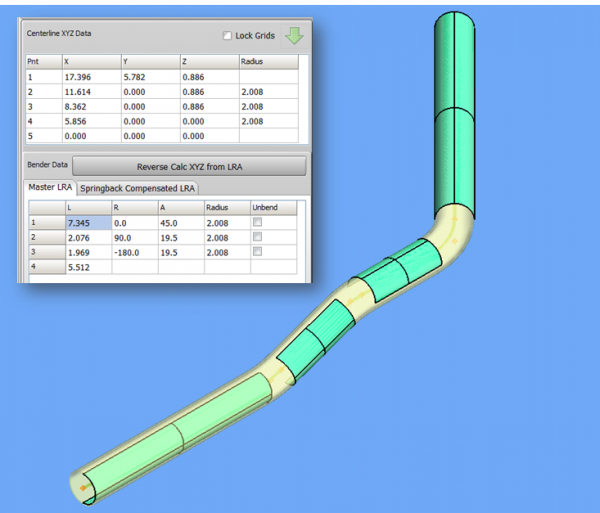Difference between revisions of "D of Bend"
(→How Is It Used?) |
(→Examples) |
||
| Line 16: | Line 16: | ||
==Examples== | ==Examples== | ||
| − | In many applications, lower D of bend valued radii. | + | In many applications, a lower D of bend valued radii is more esthetic. But it is harder to bend, and therefore more expensive. |
| − | + | *D of bend = 2.00 is generally considered not too complex. | |
| + | *D of bend = 1.50 is moderately difficult. | ||
| + | *D of bend = 1.00 is difficult. | ||
| − | + | D of bend values below 1 are possible - but are very rare and require special benders that can press material into the bender's dies. (Most call this "carriage boost".) For example, it is possible to achieve 0.75 D of bend - but at a much higher cost. | |
| − | + | ||
| − | + | ||
| − | + | ||
| − | + | ||
| − | + | ||
| − | + | ||
| − | + | ||
| − | + | ||
| − | + | ||
| − | + | ||
==Import After Fix== | ==Import After Fix== | ||
Revision as of 15:18, 2 January 2020
- Back to VTube-STEP or VTube-LASER
Contents |
What is D of bend?
Tube fabricators sometimes indicate the centerline radius using D of bend.
We say it by speaking three words: "D of bend".
Some tube fabricators also say "D factor" to mean the same thing.
It is a ratio calculated like this: D of bend = Centerline Radius / OD
How Is It Used?
FABRICATORS: The D of bend value helps fabricators know if the radius is tight or large compared to the OD. It serves as a general guide for how difficult it will be to create a quality bend. It helps fabricators know what kind of tooling will be necessary to achieve the bend. It is useful, therefore, in building quotations for customers.
DESIGNERS: It is also helpful for designers as a limit for what is practical.
Examples
In many applications, a lower D of bend valued radii is more esthetic. But it is harder to bend, and therefore more expensive.
- D of bend = 2.00 is generally considered not too complex.
- D of bend = 1.50 is moderately difficult.
- D of bend = 1.00 is difficult.
D of bend values below 1 are possible - but are very rare and require special benders that can press material into the bender's dies. (Most call this "carriage boost".) For example, it is possible to achieve 0.75 D of bend - but at a much higher cost.
Import After Fix
This is how the imported part shows now:
